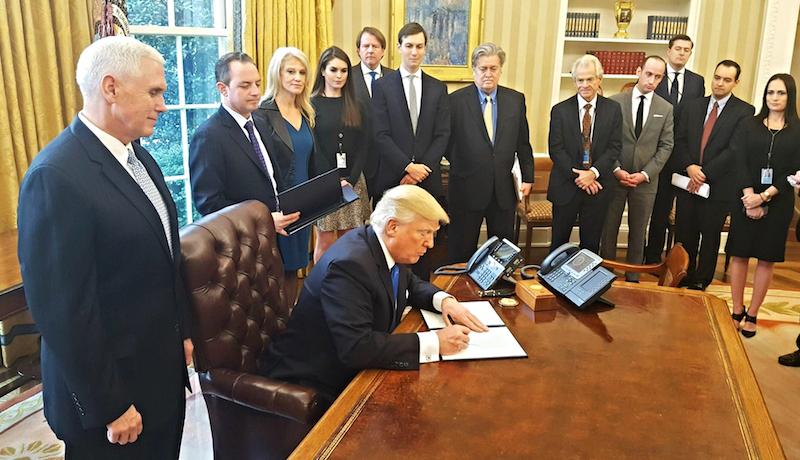President Trump’s Travel Ban: Safe for America? or Destroying The Very Fabric of Our Country?
In President Trump’s first week in office he signed an executive order to keep refugees from entering the United States for 120 days and immigrants from seven predominantly Muslim nations out for 90 days. Then, maybe they can enter the country if they are vetted. If they are lucky.
According to CNN, “Team Trump apparently never ran the order by officials at the Justice Department. Homeland Security officials weren’t given much guidance about how the order would be implemented or enforced. Thus the confusion and chaos.“
Travelers on planes were trying to enter the country and were detained when the planes landed in Alexandria, VA, New York City, and Los Angeles.
The nation’s airports erupted with protests to the ban. This travel ban can be looked at as a Muslim ban in a number of different ways: It targets 7 different predominately Muslim countries which all citizens of these countries or people who have visited are not allowed to come in the US. These countries are Somalia, Libya, Sudan, Iran, Iraq, Syria, and Yemen. According to the Global Terrorism Index (an index that ranks countries by how dangerous they are) 5/7 of these countries are in the top 10 (with the exception of Sudan #16, Iran #39).
What is concerning is that all of these countries are Muslim majority, and some of these countries shouldn’t even be on this list. Another thing that is attention grabbing is that some of the countries that should be in the travel ban (based on that logic of keeping America safe), and are higher ranked on the Global Terrorism Index, aren’t included in the ban. The countries left out are the countries that do business with President Trump (i.e. Saudi Arabia, UAE, Qatar).
The Trump travel ban is an attempt to make sure that the immigrants and refugees that are coming into the United States have good intentions and are coming here for the “right reasons”. The travel ban is to ensure American safety and to create a system that works to keep out potential threats to the United States.
Many believe that a 120 day vetting period may not be the best thing for our country, but for American safety, it’s mandatory.
It’s essential to create a system that can potentially screen out and detain possible threats to our country.
On Tuesday, judges from the 9th circuit of the the U.S. Court of Appeals heard arguments from both side to make a decision whether or not to approve President Trump’s executive order. “We appreciate the importance and the time-sensitive nature of this matter and will endeavor to reach our decision as soon as possible,” said Judge Michelle Friedland at the conclusion of the arguments. If the 9th circuit doesn’t approve the executive order, the Trump administration could possibly take this case to the Supreme Court. With 8 seats on the Supreme Court, the decision could be split down the middle.
People who are in favor of the ban say that the president has a certain authority when it comes to immigration. People who oppose the ban say that yes, the president has certain authority over issues regarding immigration, but the President has crossed over the line and has gone against laws passed by congress regarding immigrants and refugees.
It seems that the country is 50% for the ban, and 50% against it. That is what is going to make the next four years tempestuous. No one side is a majority, so both sides clash.



